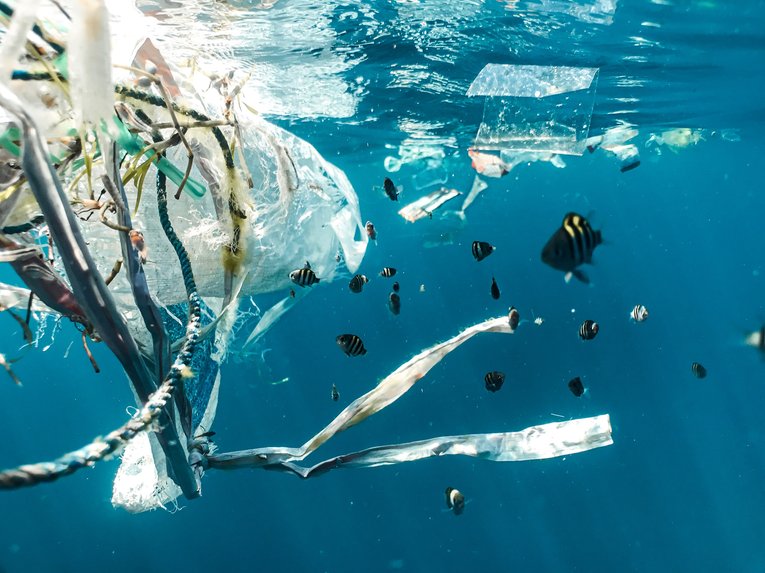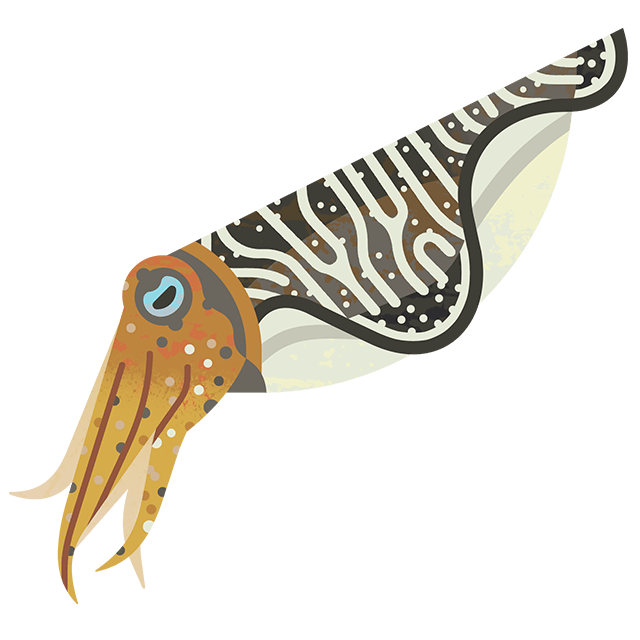
What we can learn from seaweed
3 minute read
From dabberlocks to bladder wrack, sugar kelp to thongweed, there are over 650 species of seaweed found around the UK. Each plays a vital role in supporting the health of our ocean and planet and can tell us key information about the effects of climate change – but how?
As our climate changes, the ocean often suffers the effects.
Temperatures are increasing, sea levels are rising, and our ocean is becoming more acidic. By studying seaweed and how it’s distributed around the UK, we can better understand and measure the impact of these changes on our seas.

Fucoid seaweed
Credit: Georgie Bull
Sea temperature
In the past 40 years, the sea's surface temperature around the UK has increased by 2°C. By recording where different seaweed species are found on the UK’s coastlines, we can observe any changes in the distribution of seaweed and better understand the impact of warmer seas on marine species.
As some species of seaweeds grow in cold water, research (like the Big Seaweed Search results) suggests that they’re moving further north where it’s cooler, while the range of warm water species is expanding.
Ocean acidification
The ocean absorbs carbon dioxide from the air – around 30-50%. Once absorbed, the carbon reacts with the water, making it acidic. Because there’s an increasing amount of carbon dioxide in the atmosphere, the ocean is absorbing more, and becoming increasingly acidic.
For many seaweed species, lower pH levels in the water as a result of ocean acidification can alter their capacity to grow and photosynthesise.
Ocean acidification can also reduce calcification in some seaweeds, such as coral weeds, which affects their ability to grow. Although small changes might not kill them, it does mean the seaweeds grow at slower rates, leaving them less able to compete with other species for food, water, and space.
From Big Seaweed Search data, we're able to see how these changes are affecting the growth and abundance of seaweed species over time. It’s thought that fleshy seaweeds like kelp and seagrass may thrive as they’re less affected, while calcified seaweeds will decline.
Whatever happens, changing water chemistry is likely to affect marine ecosystems, grazers and alter food webs.

Flame shell on kelp
Credit: Mark Kirkland
Non-native species
As our waters are getting warmer and more acidic, the conditions around our coastline are changing and becoming more suitable for different species of seaweed that might not have survived here previously.
Although they’ve been living in our waters for over a century, non-native seaweeds are beginning to arrive more frequently, due to the changing conditions of our waters and increased movement of humans around the ocean.
Seaweeds are largely transported through shipping. As the shipping industry continues to expand, seaweeds can be transported as ships carry species from one place to another, either through ballast tanks which collect and release water in various areas on a ship’s journey, or hull-fouling from the seaweeds which grow on the bottom of boats.
Ocean pollution can also introduce non-native species to waters, as seaweeds become attached to plastic pollution which is carried through the ocean.

Credit: Naja Bertolt Jensen
Non-native species compete with native ones for food, light, and space, and as they aren’t at risk from their usual predators – which aren’t yet in our waters – they often win. This enables them to grow and spread, while native seaweeds must either move to find space or food, or they die out altogether. As many other species in the ecosystem rely on native seaweeds, a loss of these species can have a knock-on effect for marine life.
In the past five years, we’ve already seen an increase in the number of non-native seaweed species recorded in the UK – of the 12 new species recorded, eight were non-native.
31
Non-native species recorded in UK in 2016 (5% of total)
39
Non-native species recorded in UK in 2021 (6% of total)
Using results from the Big Seaweed Search, we can monitor any changes in the distribution of native and non-native seaweeds and use this over time to understand how the ocean is being impacted by climate change.
The UK seems to be a 'goldilocks' zone for lots of species; we’re right on the edge of their 'just right' range for growing. This means we'll likely see changes or movement in where species grow depending on the how our conditions change, making the Big Seaweed Search an extremely useful tool - and perfect opportunity - for us to learn more.


